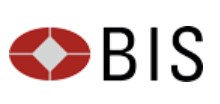BIS launches project on tokenization of cross-border payments

The BIS is embarking on a new project with the primary aim of digitizing cross-border payments. Currently supported by several central banks, the BIS plans to extend its cooperation to private players. The international institution is keen to benefit from the advantages of recent technologies such as blockchain and tokenization, and through this project will consider ways of integrating them into international payments.
FACTS
-
In early April, the Bank for International Settlements (BIS) announced the imminent launch of the "Agora" project.
-
The aim of this project is to examine and test the integration of blockchain and tokenization technologies in cross-border payments.
-
Currently, when a cross-border transfer is made, the commercial bank of the person initiating the transfer sends a message to the recipient's commercial bank. The operation then leads to a settlement between the central banks and a settlement between the central bank and the attached commercial bank. The payer's bank is debited by its central bank, and the payee's bank is credited by its central bank.
-
The participants will therefore be working on a number of topics with the aim of making a transfer between two countries far apart possible and immediate, whatever the day or time zone.
-
In concrete terms, the BIS wants to use blockchain to summarize interbank messages and settlements between central banks in a single operation. This would require:
-
A unified electronic ledger;
-
An IT system enabling the use of a central bank digital currency and the digitization of commercial bank deposits via tokenization.
-
-
The BIS could also take advantage of blockchain by using "smart contracts", electronic contracts that execute automatically when certain conditions are met.
-
This project is being carried out in cooperation with seven central banks: the Banque de France, the Bank of Japan, the Bank of Korea, the Bank of Mexico, the Swiss National Bank, the Bank of England and the US Federal Reserve.
-
As a result, some of the most important currencies are represented in this project, including the dollar, euro, yen and Swiss franc.
-
In a second phase, some of the world's most important private financial companies will be invited to join the project.
CHALLENGES
-
Working to reduce costs and risks in cross-border transfers: The BIS has identified a number of structural inefficiencies linked to legal, regulatory and technical differences, as well as differences in time zones, bank opening hours, and so on. Money laundering controls and customer verification have also added further constraints for banks, which must imperatively carry out these checks. Digitization would nevertheless represent a means of reducing costs by automating part of the process, while guaranteeing a fairly low level of risk.
-
Maintain the current structure of the monetary system: The current double-level scheme used for transfers should be retained, but improved. The BIS is counting on technologies such as smart contracts to enable the use of new settlement methods or types of transaction that were previously incompatible.
MARKET PERSPECTIVE
- The BIS is not the only international organization to turn to digital technologies. Swift is currently testing the integration of central bank digital currencies (CBDCs) into international transactions. The company is thus preparing its system for future developments, while avoiding possible fragmentation between central banks, due to the variety of technologies used in the creation of MNBCs.
